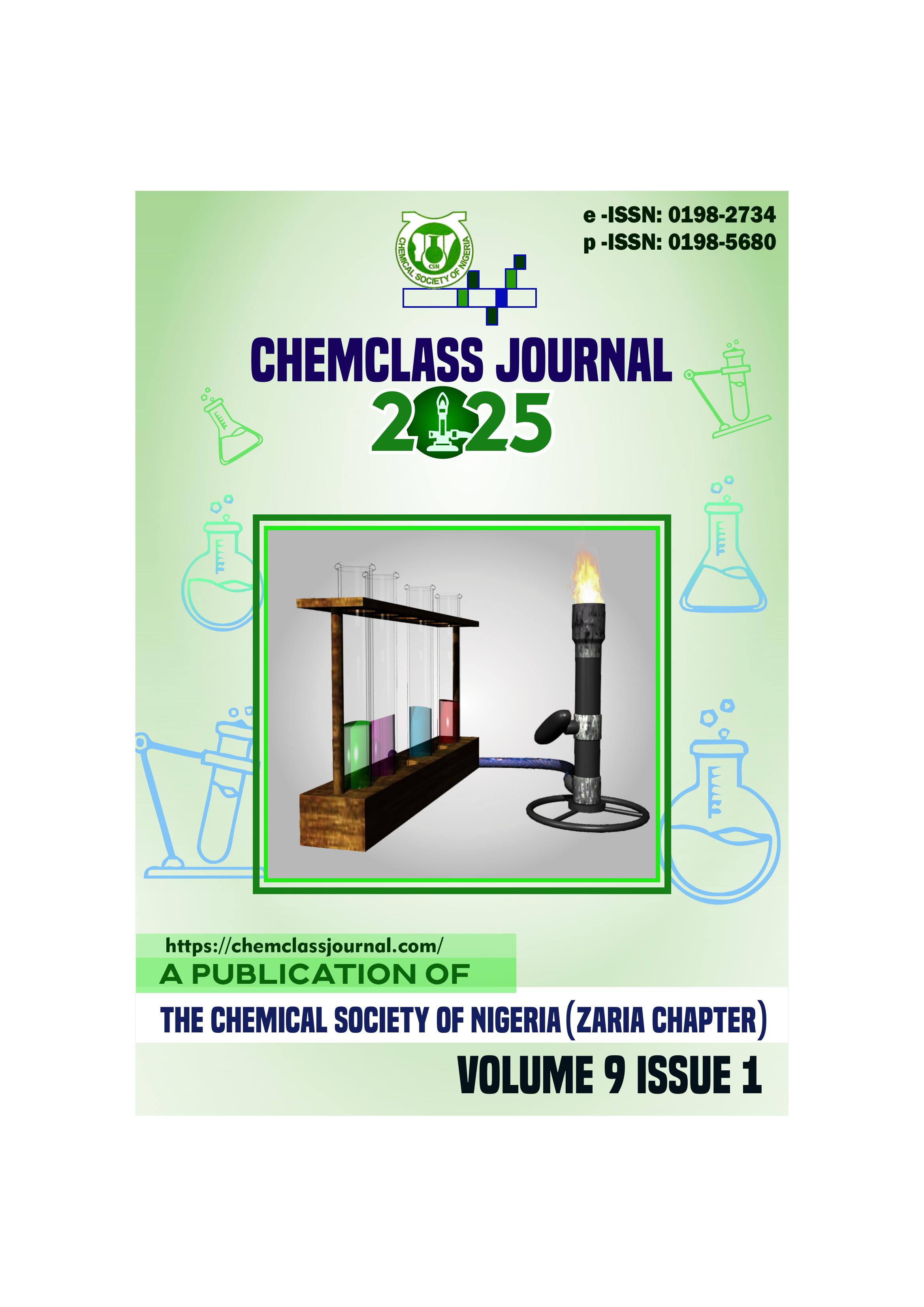Effects of Roasting on Antioxidant Activities of Ethanol Extracts of Jack Beans (Canavalia ensiformis) Seeds
DOI:
https://doi.org/10.33003/Keywords:
Legumes, Underutilized, Roasting , AntioxidantAbstract
Underutilized legumes are rich sources of essential nutrients and bioactive compounds, yet their potential
remains largely untapped. Processing techniques such as roasting and fermentation can enhance their
nutritional quality and functional properties. This study aims to evaluate the effect of roasting on the
antioxidant properties of the ethanolic extract derived from the seeds of Canavalia ensiformis (Jack bean,
JB). Total phenolic content (TPC) and total antioxidant capacity (TAC) were assessed using the Folin–
Ciocalteu and phosphomolybdenum methods, respectively, while antioxidant activity was evaluated via the
2,2-diphenyl-1-picrylhydrazyl (DPPH) radical scavenging assay. Results showed that roasting led to a
reduction in TPC (roasted JB: 37.35 ± 3.75 mgGAE/g; raw JB: 42.20 ± 4.65 mgGAE/g) and TAC (roasted
JB: 48.00 ± 4.50 mgAAE/g; raw JB: 53.15 ± 4.30 mgAAE/g), likely due to thermal degradation of heatsensitive phenolic compounds. Both extracts exhibited concentration-dependent DPPH scavenging activity,
though their potency was lower than sodium ascorbate (standard). At the highest studied concentration of
100 μg/mL, scavenging activity followed the order: sodium ascorbate (75%) > RAJB (60%) > ROJB (58%).
Although roasting led to a slight reduction in antioxidant activity, a substantial level of antioxidant potential
was preserved, indicating that roasted JB seeds can still serve as a valuable dietary source of natural
antioxidants with potential applications in functional foods and nutraceuticals for managing oxidative
stress-related disorders. Underutilized legumes are rich sources of essential nutrients and bioactive compounds, yet their potential
remains largely untapped. Processing techniques such as roasting and fermentation can enhance their
nutritional quality and functional properties. This study aims to evaluate the effect of roasting on the
antioxidant properties of the ethanolic extract derived from the seeds of Canavalia ensiformis (Jack bean,
JB). Total phenolic content (TPC) and total antioxidant capacity (TAC) were assessed using the Folin–
Ciocalteu and phosphomolybdenum methods, respectively, while antioxidant activity was evaluated via the
2,2-diphenyl-1-picrylhydrazyl (DPPH) radical scavenging assay. Results showed that roasting led to a
reduction in TPC (roasted JB: 37.35 ± 3.75 mgGAE/g; raw JB: 42.20 ± 4.65 mgGAE/g) and TAC (roasted
JB: 48.00 ± 4.50 mgAAE/g; raw JB: 53.15 ± 4.30 mgAAE/g), likely due to thermal degradation of heat-sensitive phenolic compounds. Both extracts exhibited concentration-dependent DPPH scavenging activity,
though their potency was lower than sodium ascorbate (standard). At the highest studied concentration of
100 μg/mL, scavenging activity followed the order: sodium ascorbate (75%) > RAJB (60%) > ROJB (58%).
Although roasting led to a slight reduction in antioxidant activity, a substantial level of antioxidant potential
was preserved, indicating that roasted JB seeds can still serve as a valuable dietary source of natural
antioxidants with potential applications in functional foods and nutraceuticals for managing oxidative
stress-related disorders.





 ChemClass Journal
ChemClass Journal
